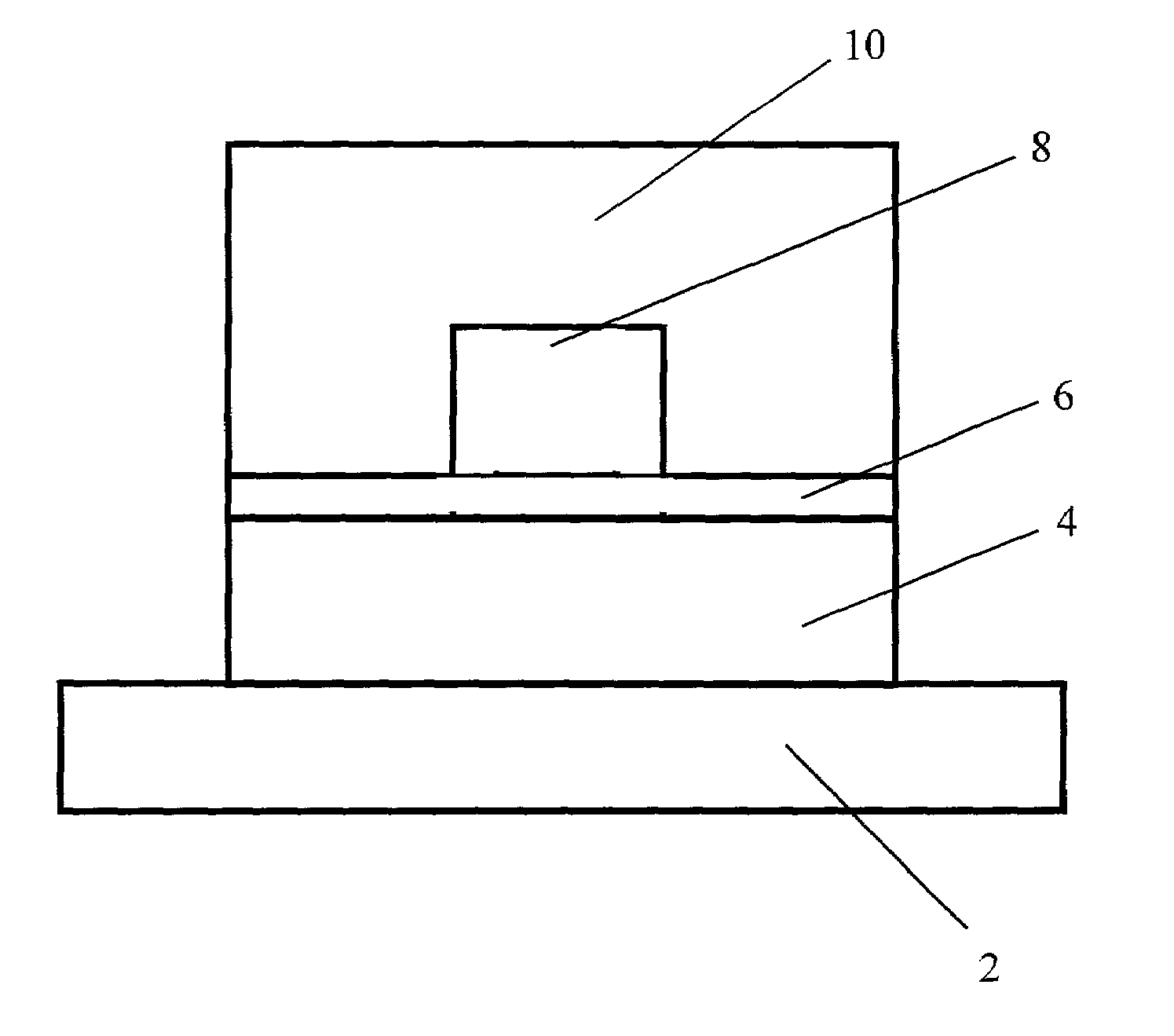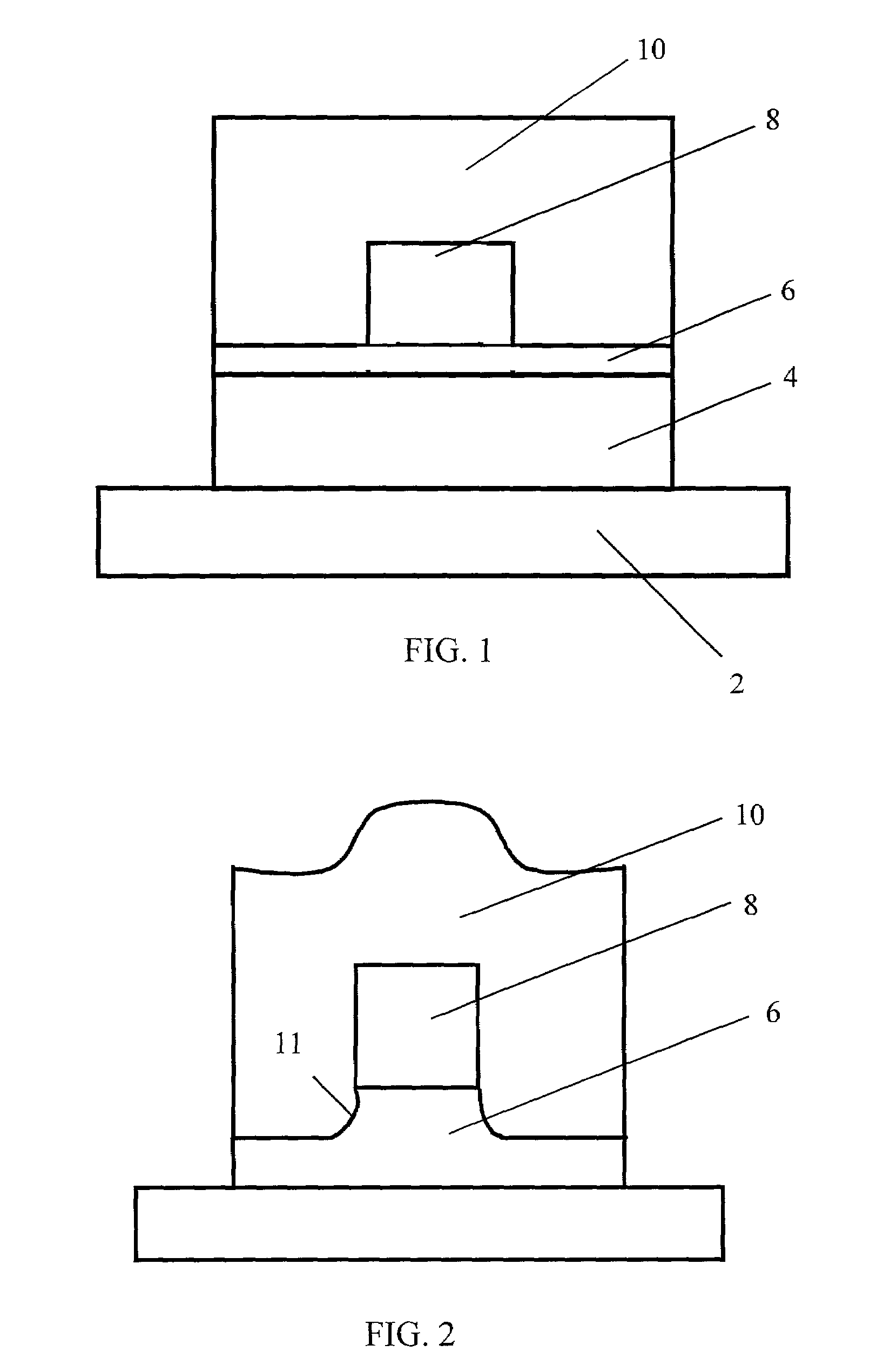Polymer waveguide fabrication process
a polymer and waveguide technology, applied in the field of polymer waveguide fabrication, can solve the problems of excessive evaporation and removal of these components, and achieve the effects of superior properties and manufacturability, and elimination of residual volatiles
- Summary
- Abstract
- Description
- Claims
- Application Information
AI Technical Summary
Benefits of technology
Problems solved by technology
Method used
Image
Examples
example 1
[0062]The process described herein was applied to the production of an array of planar polymer waveguides on a silicon wafer. This process was demonstrated to have advantages in ease of use and ease of scalability. Additionally, the process produced fabricated waveguides with high uniformity of such physical features as layer thickness and waveguide geometry, and with very low optical insertion loss at important telecommunication waveguides of roughly 1.3 μm and 1.55 μm.
[0063]A 100-mm diameter 4″ silicon wafer with a 500 nm thick oxide layer was obtained in a clean state from the wafer manufacturer. The silicon substrate was treated by soaking in 4 M NaOH solution for 1 hour, followed by rinsing under flowing de-ionized water for 15 minutes. The NaOH treatment is meant to ensure complete functionalization of the silicon oxide surface with OH groups. The silicon wafer was dried by blowing off excess water and baking on a 120° C. hot plate for 10 minutes. Neat (3-acryloxypropyl)trichl...
PUM
 Login to View More
Login to View More Abstract
Description
Claims
Application Information
 Login to View More
Login to View More - R&D
- Intellectual Property
- Life Sciences
- Materials
- Tech Scout
- Unparalleled Data Quality
- Higher Quality Content
- 60% Fewer Hallucinations
Browse by: Latest US Patents, China's latest patents, Technical Efficacy Thesaurus, Application Domain, Technology Topic, Popular Technical Reports.
© 2025 PatSnap. All rights reserved.Legal|Privacy policy|Modern Slavery Act Transparency Statement|Sitemap|About US| Contact US: help@patsnap.com



